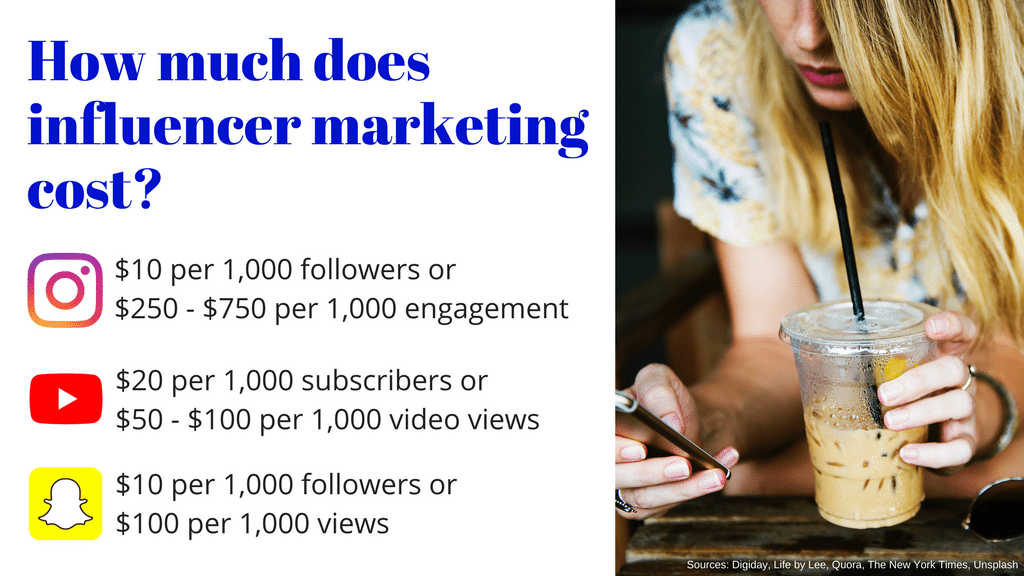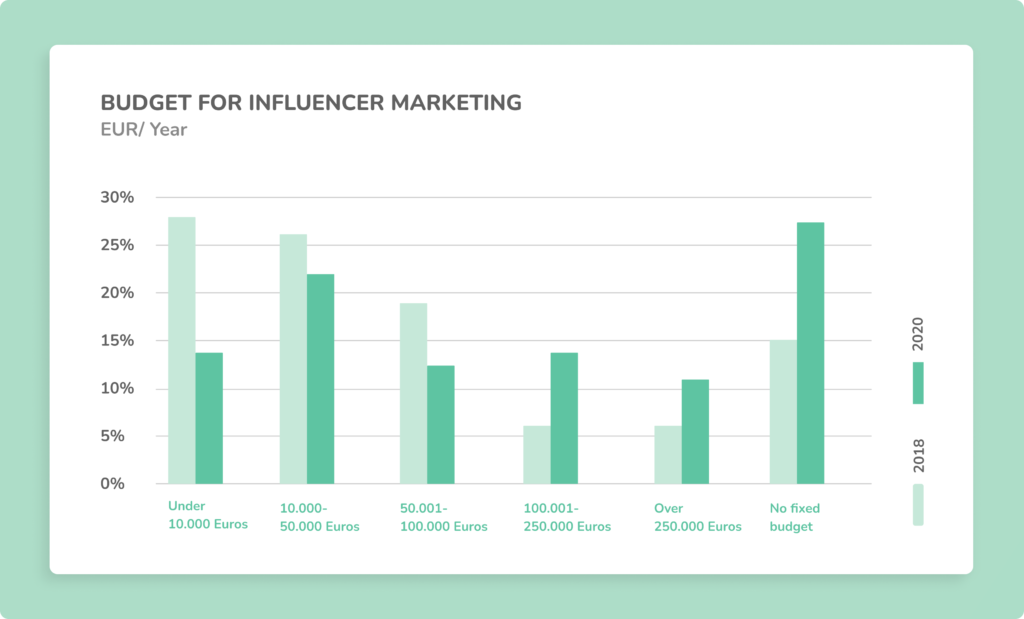Influencer marketing costs vary widely. Prices range from $10 to $10,000 per post, depending on the influencer’s reach and engagement.
Influencer marketing has become a powerful tool for brands seeking to enhance their online presence. Costs depend on several factors, including the influencer’s follower count, engagement rates, niche, and platform. Micro-influencers with 1,000 to 10,000 followers might charge $10-$500 per post, while macro-influencers with over 100,000 followers can command $1,000-$10,000 or more.
Brands must consider these variables to budget effectively and achieve their marketing goals. By partnering with the right influencers, companies can reach their target audience and boost brand awareness efficiently. Understanding the cost dynamics is essential for making informed decisions and maximizing ROI.
The Surge Of Influencer Marketing
Social media has changed how we see brands. Influencers have a big role in this change. Many people trust influencers more than ads. This has led to a rise in influencer marketing. Brands now work with influencers to reach more people. This method is more personal and engaging. Influencers can show how products work in real life. This makes their followers trust the brand more.
Brands see great results from working with influencers. Sales often go up after a collaboration. The brand’s image also improves. Influencers help brands look authentic. They can create content that feels real and relatable. This helps the brand reach new audiences. Influencer marketing is a smart move for many brands. It helps them grow and connect with more people.

Credit: buffer.com
Decoding Influencer Tiers
Micro influencers have 1,000 to 100,000 followers. They often have a close bond with their audience. They are usually more affordable. Macro influencers have 100,000 to 1 million followers. They reach a wider audience. They cost more than micro influencers. Mega influencers have over 1 million followers. They often include celebrities. They are the most expensive option.
Think about your budget and goals. Micro influencers can boost engagement. Macro influencers can widen brand visibility. Mega influencers offer massive reach. Your brand’s goals will guide your choice. It’s important to match the influencer’s audience with your target market. Consider the influencer’s content quality and style. Make sure it aligns with your brand’s image.
Cost Influencers: What Affects Pricing?
Influencers with high niche expertise charge more. They have loyal followers who trust their advice. Audience engagement also matters. High engagement rates mean more interaction. This can lead to better results for your campaign.
Exclusivity affects cost too. If you want the influencer to promote only your brand, it costs more. Longer campaigns also require more work. This increases the overall cost. Make sure to consider these factors in your budget.

Credit: blog.squarelovin.com
Budgeting For Influencer Campaigns
Influencer marketing can fit many budgets. Small brands may spend a few hundred dollars. Large brands might spend thousands. Micro-influencers often charge less. Mega-influencers demand higher fees. Set aside funds for campaign management. Also, allocate money for content creation. Always keep a buffer for unexpected costs.
Expect a good return on investment (ROI). Influencers can boost brand awareness. They also drive sales. Always track your ROI. Use tools to measure success. Negotiate rates with influencers. Offer long-term partnerships. This can lower costs. Be clear about deliverables. This avoids misunderstandings. Always have a contract in place.
Behind-the-scenes: Additional Expenses
Creating content is not free. Influencers often need to buy props, outfits, or special equipment. They may also need to hire photographers or videographers. These costs can add up quickly. Influencers put in a lot of effort to make high-quality content. This effort is reflected in the pricing.
Many influencers work with managers or agencies. These professionals help them get better deals. Managers and agencies take a percentage of the influencer’s earnings. This fee can be anywhere from 10% to 30%. It’s important to factor this into the total cost. Working with a professional can often lead to better results.
Measuring Success Beyond The Price Tag
The impact of an influencer campaign can be huge. Tracking engagement is key. Look at likes, shares, and comments. These show how people react. Sales conversions are also important. They tell you if people buy after seeing the post. Brand awareness matters too. It shows if more people know about your brand. Sentiment analysis is another tool. It tells you if people feel good about your brand. Always measure ROI to see if the campaign is worth the cost.
Influencer partnerships can bring lasting benefits. Building trust with the audience is a big win. It makes people loyal to your brand. Consistent exposure keeps your brand in people’s minds. This helps with long-term growth. Collaborating regularly with influencers builds a strong relationship. This can lead to more authentic promotions. Influencers can also give you valuable feedback. They know what their followers like. This can help you improve your products.

Credit: buffer.com
Frequently Asked Questions
What Is The Average Cost For Influencer Marketing?
The average cost for influencer marketing ranges from $100 to $10,000 per post. Prices vary based on follower count and engagement.
What Is A Good Budget For Influencer Marketing?
A good budget for influencer marketing typically ranges from $1,000 to $10,000 per campaign. Budget varies by influencer size and goals.
Is Influencer Marketing Worth It?
Yes, influencer marketing is worth it. It boosts brand visibility, drives engagement, and increases sales effectively.
How Much Do Brands Spend On Influencer Marketing?
Brands spend between $1,000 to $1 million per influencer marketing campaign. Budgets vary based on influencer reach and engagement.
What Is The Average Cost Of Influencer Marketing?
The average cost varies from $100 to $10,000 per post, depending on the influencer’s reach and niche.
What Are the Key Factors that Influence Influencer Marketing Costs?
When determining Instagram marketing influencer secrets, the key factors that influence influencer marketing costs include the influencer’s reach, engagement rate, and niche expertise. Additionally, factors such as the type of content, frequency of posts, and the influencer’s overall brand image can also impact the pricing for influencer marketing collaborations.
Conclusion
Influencer marketing costs vary based on factors like audience size, engagement rates, and campaign goals. Budgeting wisely ensures effective results. Research and negotiate for the best deals. Consider micro-influencers for cost-effective options. Ultimately, investing in influencer marketing can boost brand visibility and drive sales, making it a valuable strategy.
